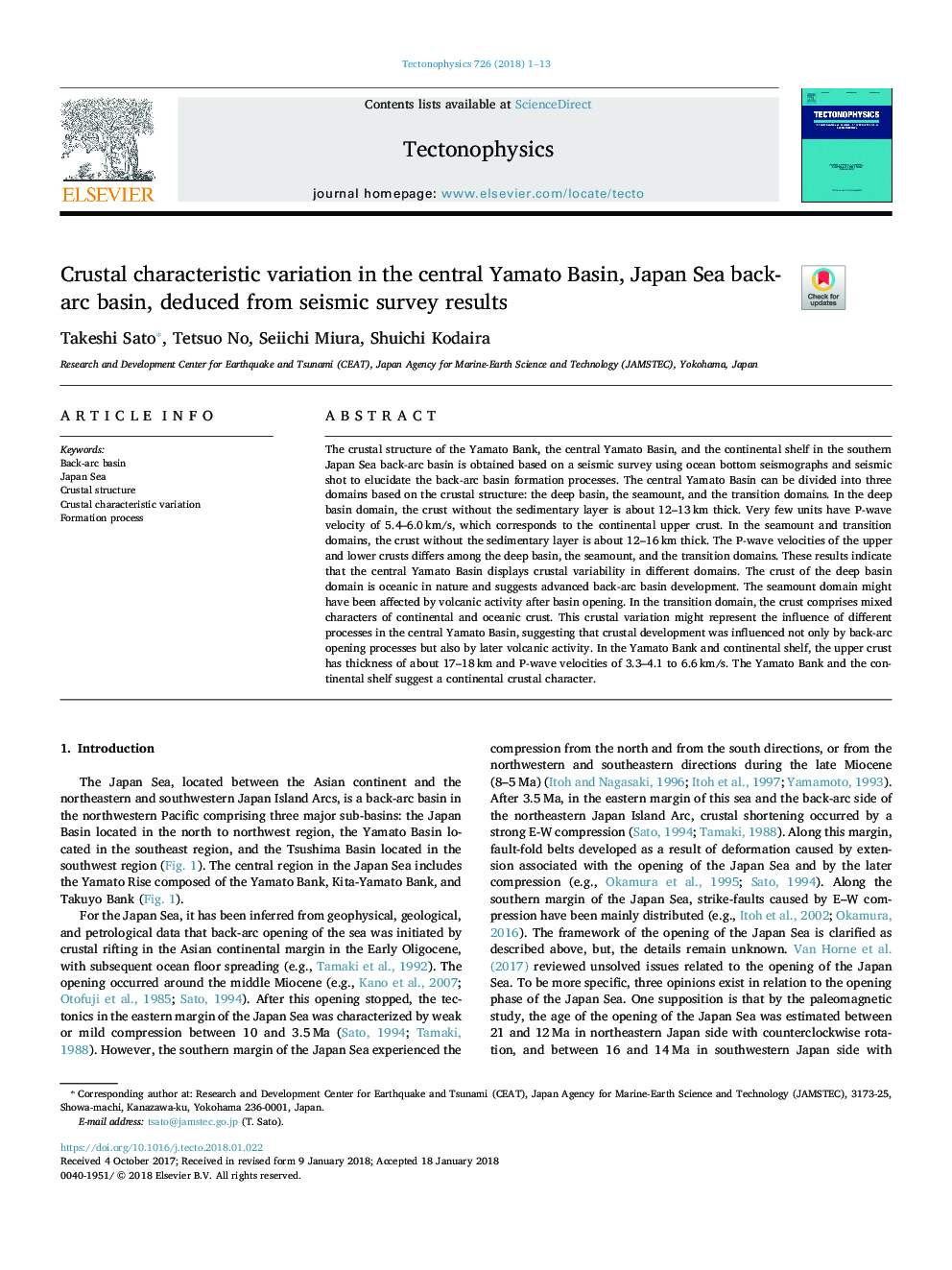| Article ID | Journal | Published Year | Pages | File Type |
|---|---|---|---|---|
| 8908748 | Tectonophysics | 2018 | 13 Pages |
Abstract
The crustal structure of the Yamato Bank, the central Yamato Basin, and the continental shelf in the southern Japan Sea back-arc basin is obtained based on a seismic survey using ocean bottom seismographs and seismic shot to elucidate the back-arc basin formation processes. The central Yamato Basin can be divided into three domains based on the crustal structure: the deep basin, the seamount, and the transition domains. In the deep basin domain, the crust without the sedimentary layer is about 12-13â¯km thick. Very few units have P-wave velocity of 5.4-6.0â¯km/s, which corresponds to the continental upper crust. In the seamount and transition domains, the crust without the sedimentary layer is about 12-16â¯km thick. The P-wave velocities of the upper and lower crusts differs among the deep basin, the seamount, and the transition domains. These results indicate that the central Yamato Basin displays crustal variability in different domains. The crust of the deep basin domain is oceanic in nature and suggests advanced back-arc basin development. The seamount domain might have been affected by volcanic activity after basin opening. In the transition domain, the crust comprises mixed characters of continental and oceanic crust. This crustal variation might represent the influence of different processes in the central Yamato Basin, suggesting that crustal development was influenced not only by back-arc opening processes but also by later volcanic activity. In the Yamato Bank and continental shelf, the upper crust has thickness of about 17-18â¯km and P-wave velocities of 3.3-4.1 to 6.6â¯km/s. The Yamato Bank and the continental shelf suggest a continental crustal character.
Related Topics
Physical Sciences and Engineering
Earth and Planetary Sciences
Earth-Surface Processes
Authors
Takeshi Sato, Tetsuo No, Seiichi Miura, Shuichi Kodaira,
